Finger Bending Sensing Based on Series-Connected Fiber Bragg Gratings
Abstract
:1. Introduction
2. Materials and Methods
2.1. Materials
2.2. Design of Sensing
2.3. Analysis of Model
3. Results
4. Conclusions
Author Contributions
Funding
Institutional Review Board Statement
Informed Consent Statement
Data Availability Statement
Acknowledgments
Conflicts of Interest
References
- Muller, U.; Gust, P.; Spitz, T.; Feller, N.; Kamp, S. Light weight gloves with self-sensing smart actuators for work stress reduction. Procedia Manuf. 2015, 3, 1426–1433. [Google Scholar] [CrossRef] [Green Version]
- Advani, S.; Zientara, P.; Shukla, N.; Okafor, I.; Irick, K.; Sampson, J.; Datta, S.; Narayanan, V. A Multitask Grocery Assist System for the Visually Impaired: Smart glasses, gloves, and shopping carts provide auditory and tactile feedback. IEEE Consum. Electron. Mag. 2017, 6, 73–81. [Google Scholar] [CrossRef]
- Zhu, M.L.; Sun, Z.D.; Zhang, Z.X.; Shi, Q.F.; He, T.Y.Y.; Liu, H.C.; Chen, T.; Lee, C.K. Haptic-feedback smart glove as a creative human-machine interface (HMI) for virtual/augmented reality applications. Sci. Adv. 2020, 6, eaaz8693. [Google Scholar] [CrossRef] [PubMed]
- Dong, W.T.; Yang, L.; Fortino, G. Stretchable Human Machine Interface Based on Smart Glove Embedded With PDMS-CB Strain Sensors. IEEE Sens. J. 2020, 20, 8073–8081. [Google Scholar] [CrossRef]
- Chuang, W.C.; Hwang, W.J.; Tai, T.M.; Huang, D.R.; Jhang, Y.J. Continuous Finger Gesture Recognition Based on Flex Sensors. Sensors 2019, 19, 3986. [Google Scholar] [CrossRef] [Green Version]
- Connolly, J.; Condell, J.; O’Flynn, B.; Sanchez, J.T.; Gardiner, P. IMU Sensor-Based Electronic Goniometric Glove for Clinical Finger Movement Analysis. IEEE Sens. J. 2018, 18, 1273–1281. [Google Scholar] [CrossRef]
- Dutta, D.; Modak, S.; Kumar, A.; Roychowdhury, J.; Mandal, S. Bayesian network aided grasp and grip efficiency estimation using a smart data glove for post-stroke diagnosis. Biocybern. Biomed. Eng. 2017, 37, 44–58. [Google Scholar] [CrossRef]
- Amanzadeh, M.; Aminossadati, S.M.; Kizil, M.S.; Rakic, A.D. Recent developments in fibre optic shape sensing. Measurement 2018, 128, 119–137. [Google Scholar] [CrossRef] [Green Version]
- Jha, C.K.; Gajapure, K.; Chakraborty, A.L. Design and Evaluation of an FBG Sensor-Based Glove to Simultaneously Monitor Flexure of Ten Finger Joints. IEEE Sens. J. 2021, 21, 7620–7630. [Google Scholar] [CrossRef]
- Lo Presti, D.; Massaroni, C.; Leitao, C.S.J.; Domingues, M.D.; Sypabekova, M.; Barrera, D.; Floris, I.; Massari, L.; Oddo, C.M.; Sales, S.; et al. Fiber Bragg Gratings for Medical Applications and Future Challenges: A Review. IEEE Access 2020, 8, 156863–156888. [Google Scholar] [CrossRef]
- Han, X.X.; Miao, X.H.; Chen, X.; Jiang, G.M.; Niu, L. Research on finger movement sensing performance of conductive gloves. J. Eng. Fiber Fabr. 2019, 14. [Google Scholar] [CrossRef] [Green Version]
- Passian, A.; Imam, N. Nanosystems, Edge Computing, and the Next Generation Computing Systems. Sensors 2019, 19, 4048. [Google Scholar] [CrossRef] [Green Version]
- Mckenzie, I.; Karafolas, N. Fiber optic sensing in space structures: The experience of the European Space Agency. P. Soc. Photo-Opt. Ins. 2005, 5855, 262–269. [Google Scholar]
- Luyckx, G.; Voet, E.; Lammens, N.; Degrieck, J. Strain Measurements of Composite Laminates with Embedded Fibre Bragg Gratings: Criticism and Opportunities for Research. Sensors 2011, 11, 384–408. [Google Scholar] [CrossRef] [PubMed] [Green Version]
- Degrieck, J.; De Waele, W.; Verleysen, P. Monitoring of fibre reinforced composites with embedded optical fibre Bragg sensors, with application to filament wound pressure vessels. NDT&E Int. 2001, 34, 289–296. [Google Scholar]
- De Baere, I.; Voet, E.; Van Paepegem, W.; Vlekken, J.; Cnudde, V.; Masschaele, B.; Degrieck, J. Strain monitoring in thermoplastic composites with optical fiber sensors: Embedding process, visualization with micro-tomography, and fatigue results. J. Thermoplast. Compos. 2007, 20, 453–472. [Google Scholar] [CrossRef]
- Degrieck, J.; Paepegem, W.V.; Cnudde, V.; Baere, I.D.; Baets, P.D.; Declercq, N.; Luyckx, G.; Masschaele, B.; Moentjens, A.; Quintelier, J. Monitoring of Fatigue, Impact and Wear in Cetex TPC. In Proceedings of the Cetex-Thermoplastic Composites, from Scratch to Flight, Proceedings of the first Cetex Conference, Bandenburg, Germany, 1–2 February 2006. [Google Scholar]
- de Oliveira, R.; Ramos, C.A.; Marques, A.T. Health monitoring of composite structures by embedded FBG and interferometric Fabry-Perot sensors. Comput. Struct. 2008, 86, 340–346. [Google Scholar] [CrossRef]
- Carmo, J.P.; da Silva, A.M.F.; Rocha, R.P.; Correia, J.H. Application of Fiber Bragg Gratings to Wearable Garments. IEEE Sens. J. 2012, 12, 261–266. [Google Scholar] [CrossRef]
- Guo, J.J.; Zhao, K.J.; Zhou, B.Q.; Ning, W.; Jiang, K.L.; Yang, C.X.; Kong, L.J.; Dai, Q.H. Wearable and Skin-Mountable Fiber-Optic Strain Sensors Interrogated by a Free-Running, Dual-Comb Fiber Laser. Adv. Opt. Mater 2019, 7, 1900086. [Google Scholar] [CrossRef]
- Zaltieri, M.; Massaroni, C.; Lo Presti, D.; Bravi, M.; Sabbadini, R.; Miccinilli, S.; Sterzi, S.; Formica, D.; Schena, E. A Wearable Device Based on a Fiber Bragg Grating Sensor for Low Back Movements Monitoring. Sensors 2020, 20, 3825. [Google Scholar] [CrossRef]
- Pant, S.; Umesh, S.; Asokan, S. Knee Angle Measurement Device Using Fiber Bragg Grating Sensor. IEEE Sens. J. 2018, 18, 10034–10040. [Google Scholar] [CrossRef]
- Bhuyan, M.K.; Talukdar, A.K.; Gupta, P.; Laskar, R.H. Low Cost Data Glove for Hand Gesture Recognition by Finger Bend Measurement. In Proceedings of the 2020 International Conference on Wireless Communications Signal Processing and Networking (Wispnet), Chennai, India, 4–6 August 2020; pp. 25–31. [Google Scholar]
- Wang, T.; Shao, L.Y.; Canning, J.; Cook, K. Temperature and strain characterization of regenerated gratings. Opt. Lett. 2013, 38, 247–249. [Google Scholar] [CrossRef] [PubMed] [Green Version]
- Frey, B.; Snyder, P.; Ziock, K.; Passian, A. Semicomputational calculation of Bragg shift in stratified materials. Phys. Rev. E 2021, 104, 055307. [Google Scholar] [CrossRef] [PubMed]

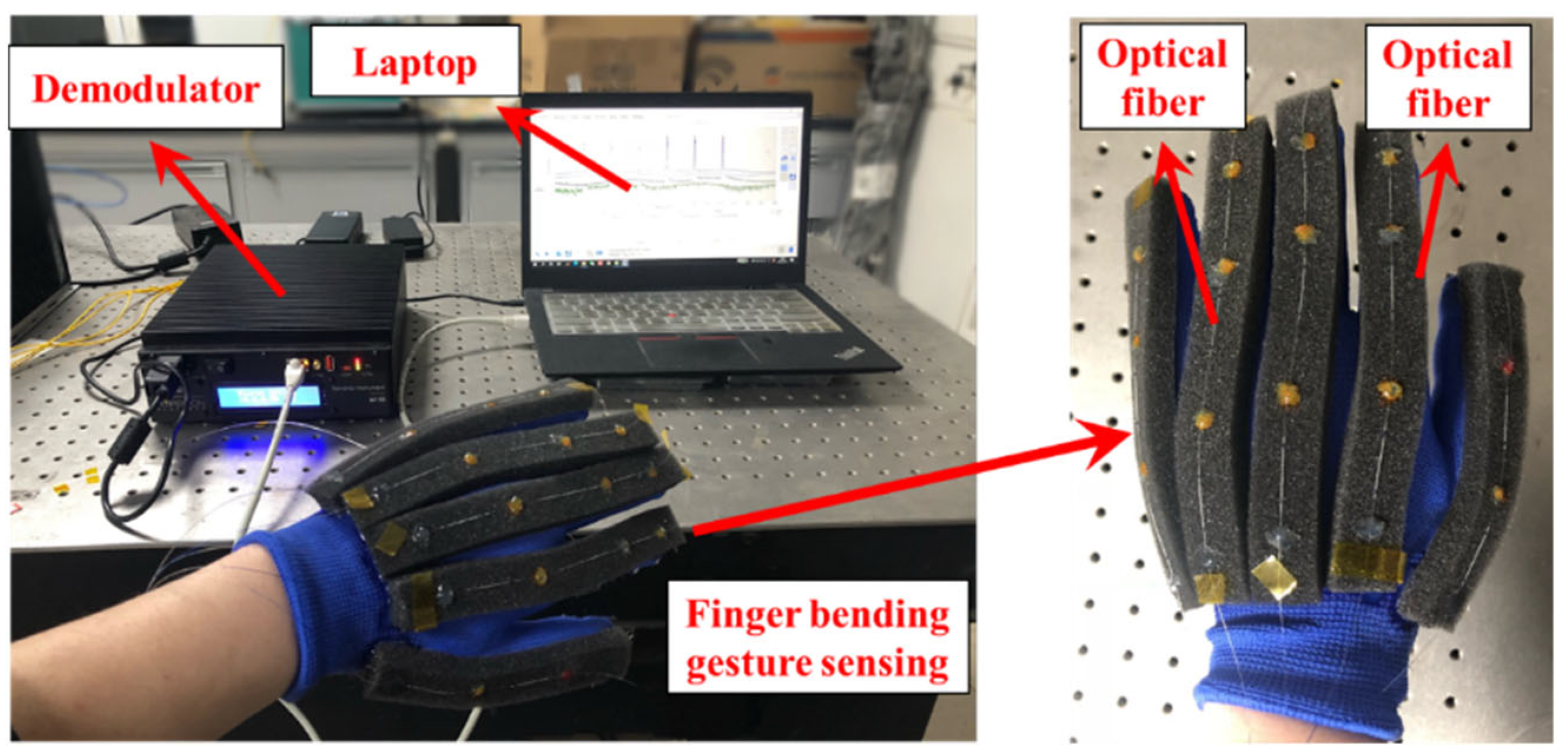
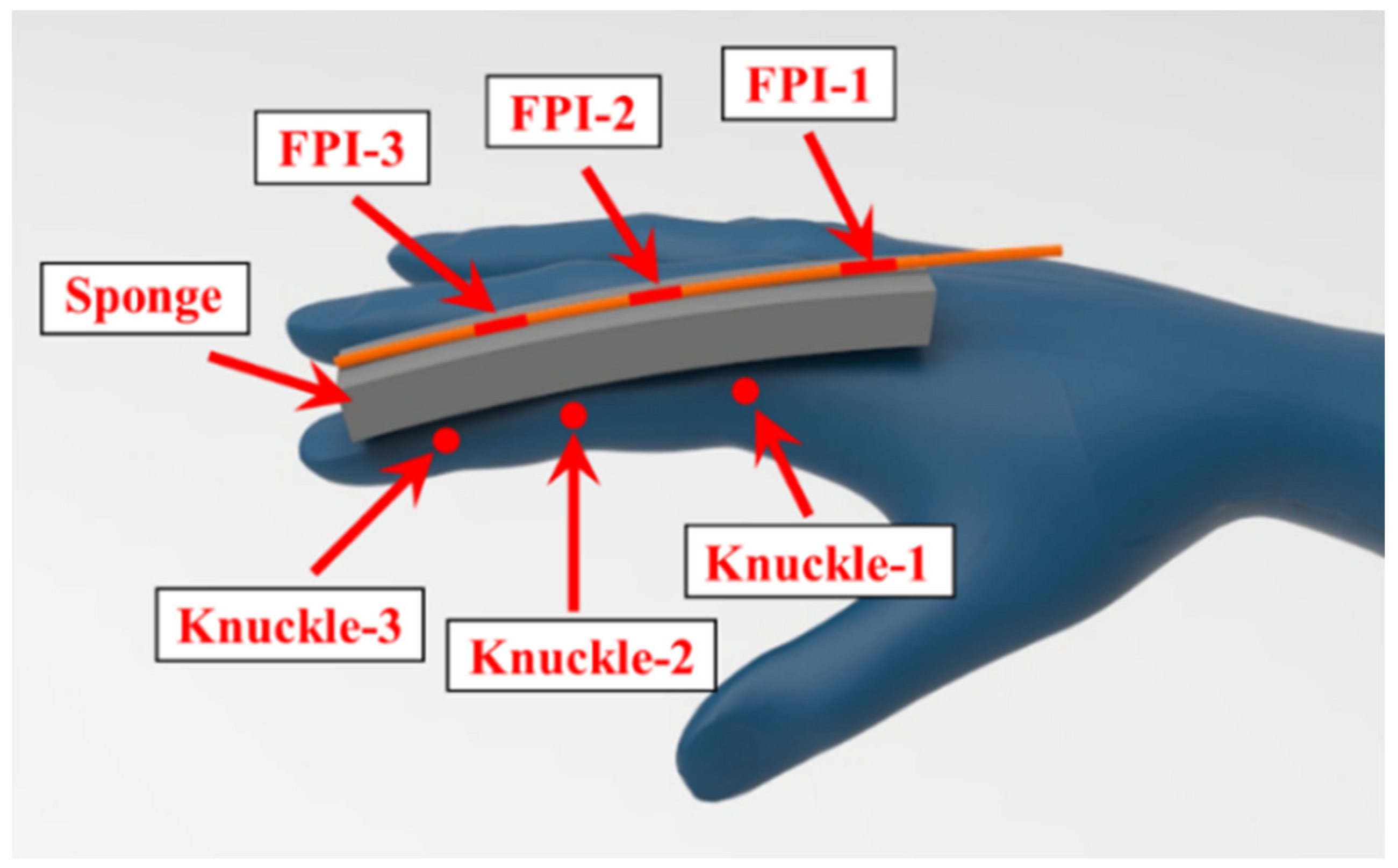
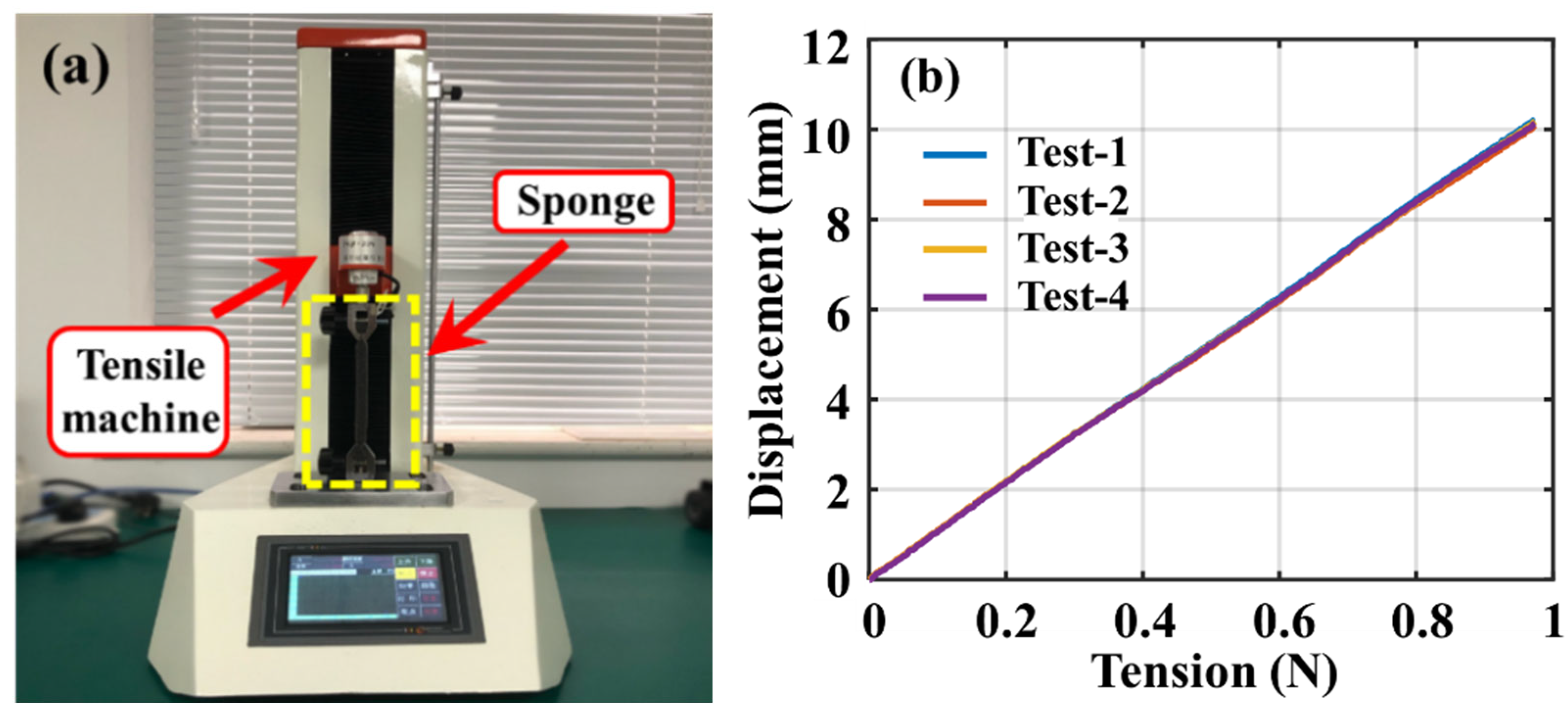
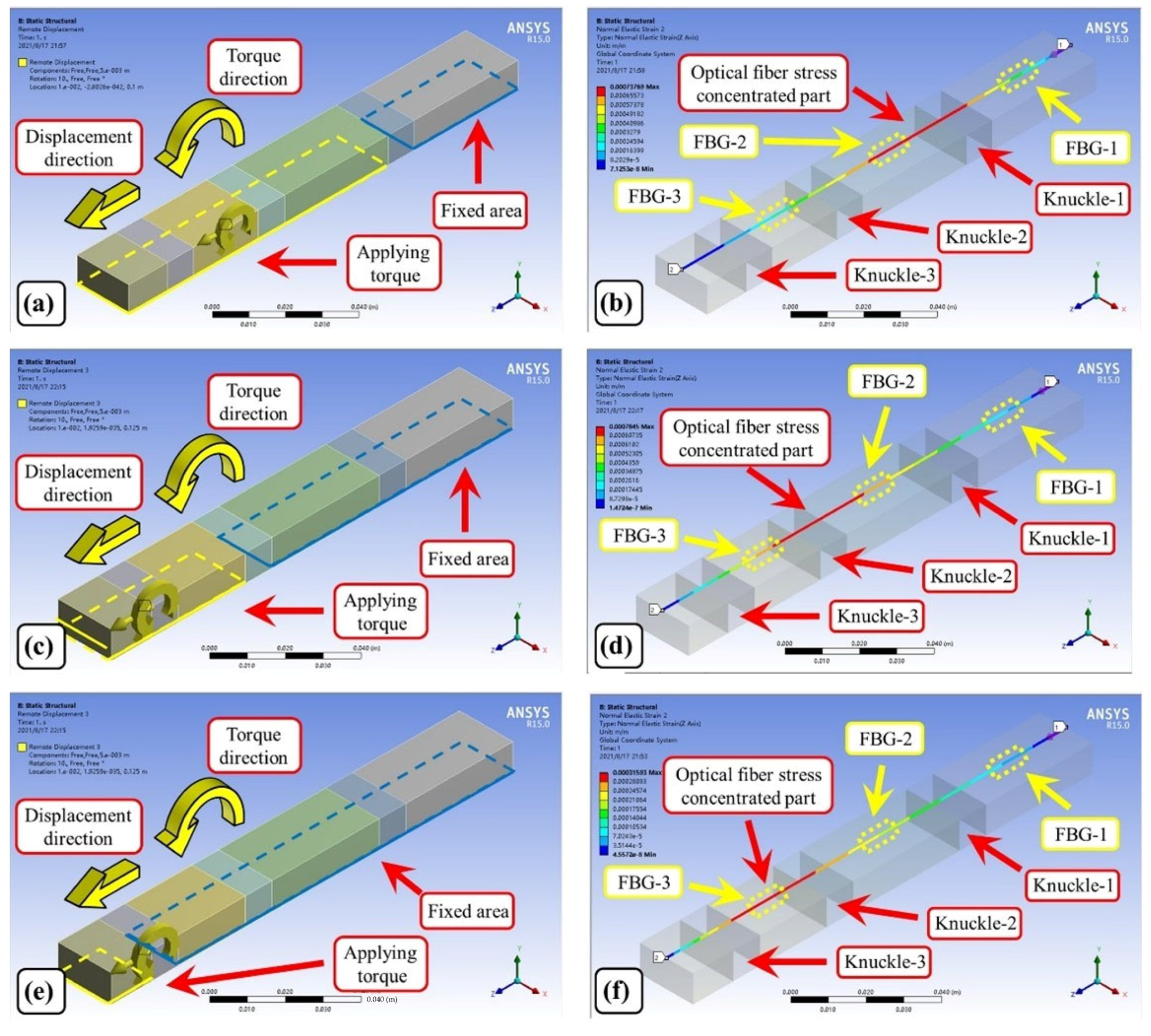
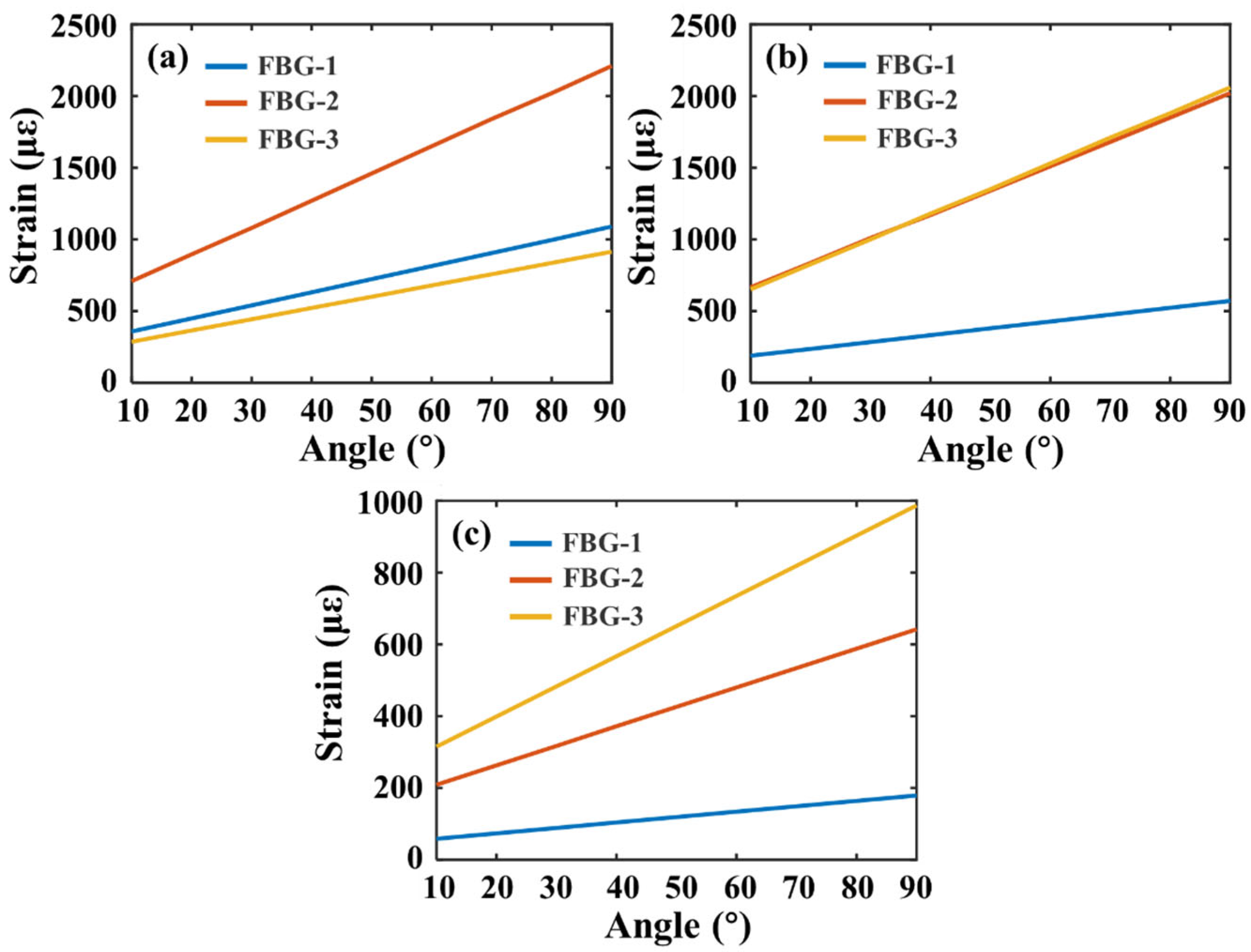
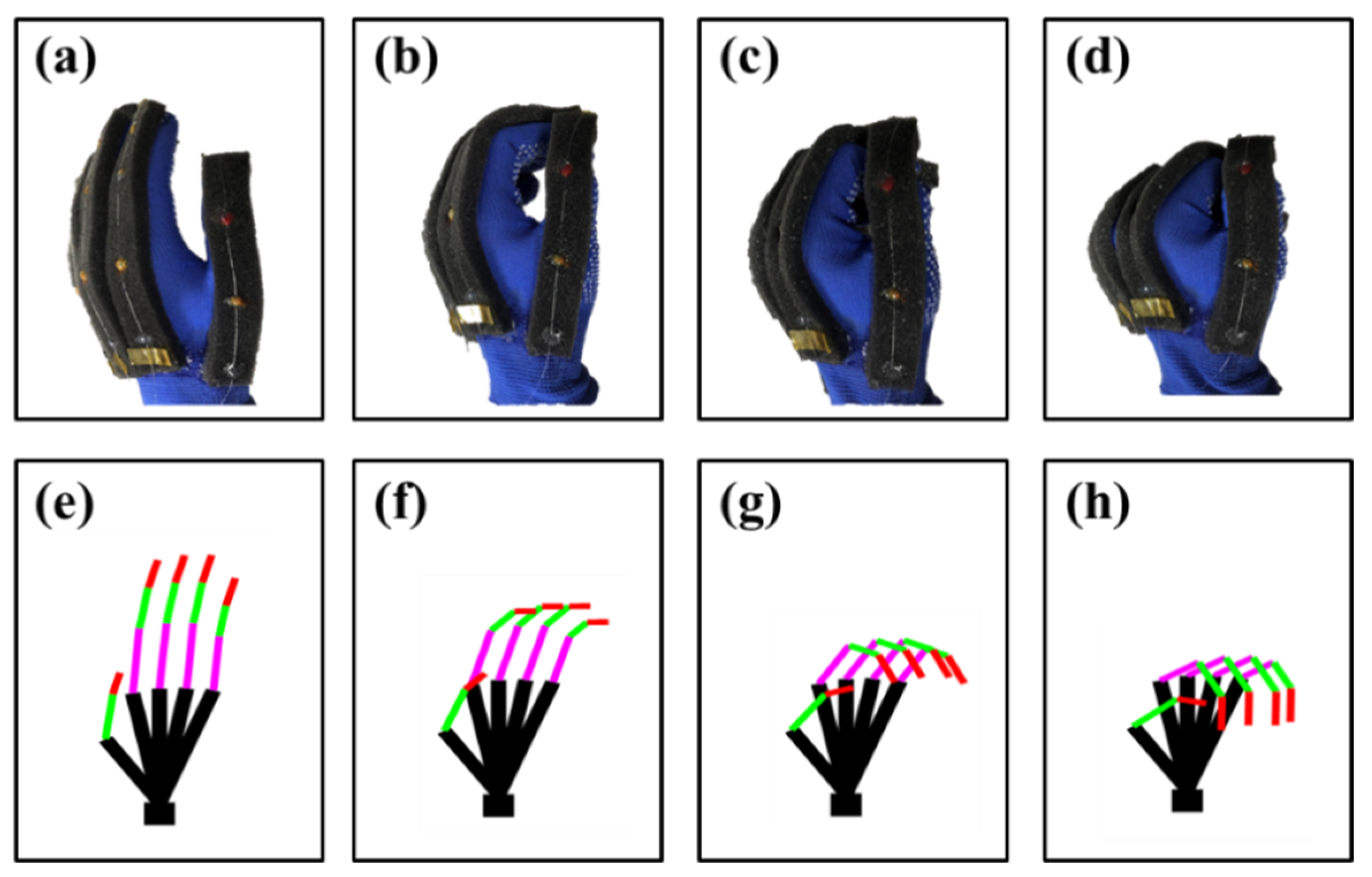

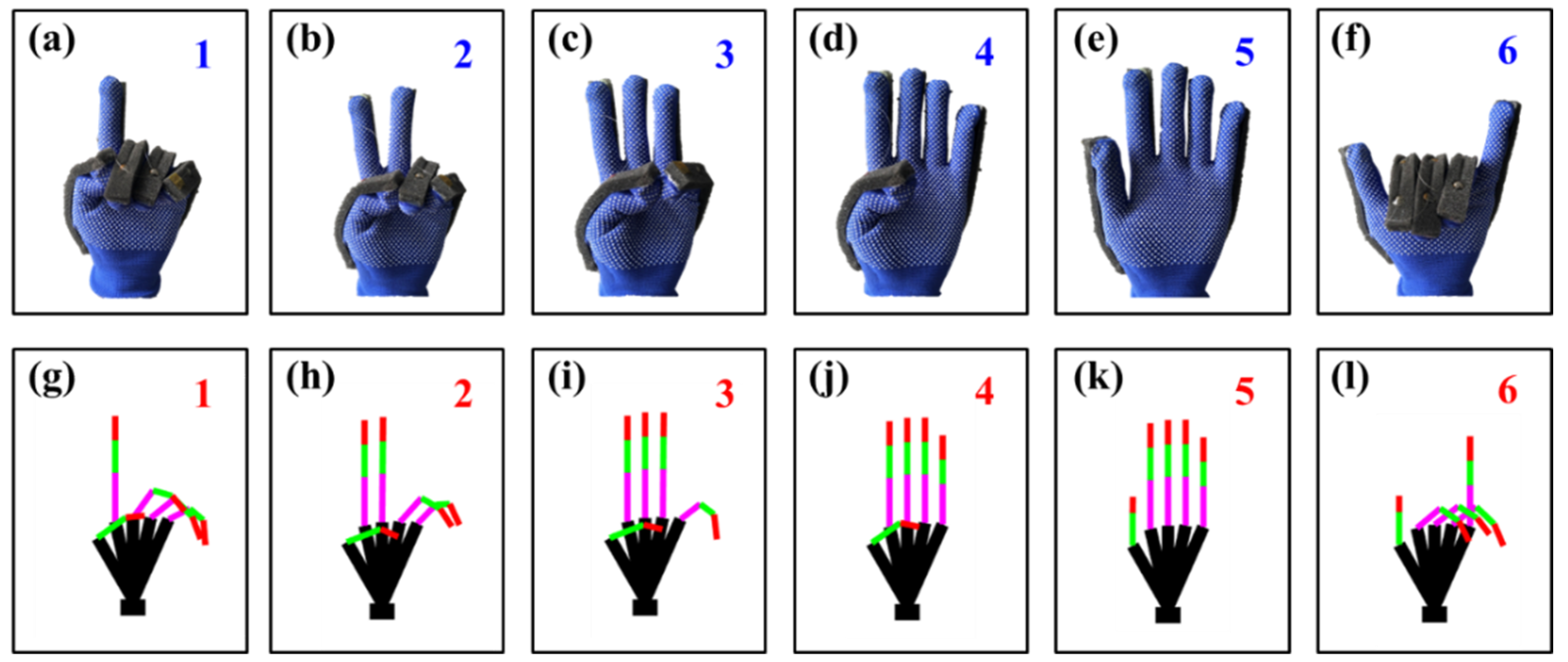
Publisher’s Note: MDPI stays neutral with regard to jurisdictional claims in published maps and institutional affiliations. |
© 2022 by the authors. Licensee MDPI, Basel, Switzerland. This article is an open access article distributed under the terms and conditions of the Creative Commons Attribution (CC BY) license (https://creativecommons.org/licenses/by/4.0/).
Share and Cite
Lin, Q.; Yao, K.; Zhao, N.; Jiao, Y.; Wang, Z.; Tian, B.; Zhao, L.; Peng, G.; Jiang, Z. Finger Bending Sensing Based on Series-Connected Fiber Bragg Gratings. Materials 2022, 15, 3472. https://doi.org/10.3390/ma15103472
Lin Q, Yao K, Zhao N, Jiao Y, Wang Z, Tian B, Zhao L, Peng G, Jiang Z. Finger Bending Sensing Based on Series-Connected Fiber Bragg Gratings. Materials. 2022; 15(10):3472. https://doi.org/10.3390/ma15103472
Chicago/Turabian StyleLin, Qijing, Kun Yao, Na Zhao, Yunjing Jiao, Zelin Wang, Bian Tian, Libo Zhao, Gangding Peng, and Zhuangde Jiang. 2022. "Finger Bending Sensing Based on Series-Connected Fiber Bragg Gratings" Materials 15, no. 10: 3472. https://doi.org/10.3390/ma15103472







